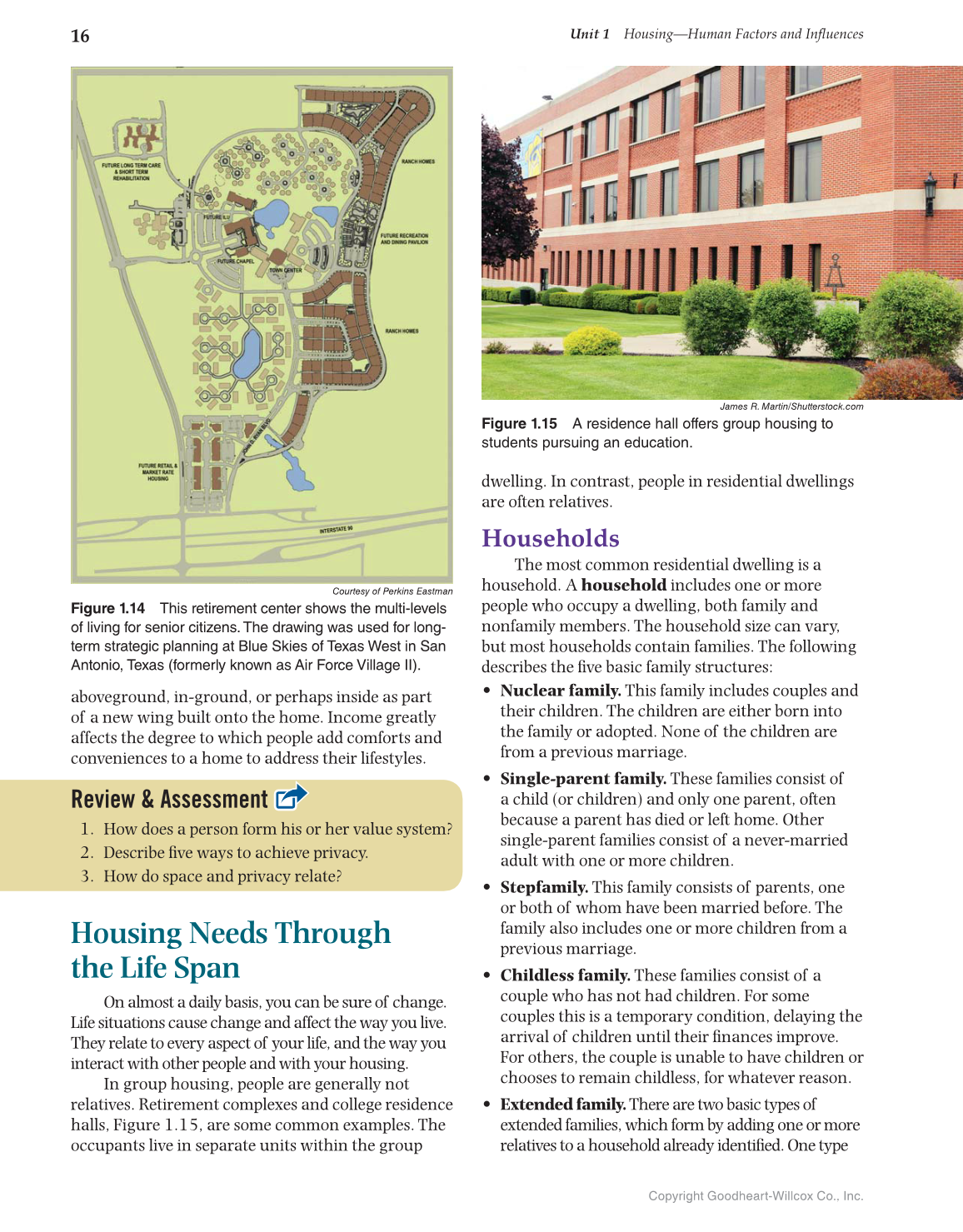Unit 1 Housing—Human Factors and Infl uences
16
Copyright Goodheart-Willcox Co., Inc.
aboveground, in-ground, or perhaps inside as part
of a new wing built onto the home. Income greatly
affects the degree to which people add comforts and
conveniences to a home to address their lifestyles.
Review & Assessment
1. How does a person form his or her value system?
2. Describe fi ve ways to achieve privacy.
3. How do space and privacy relate?
Housing Needs Through
the Life Span
On almost a daily basis, you can be sure of change.
Life situations cause change and affect the way you live.
They relate to every aspect of your life, and the way you
interact with other people and with your housing.
In group housing, people are generally not
relatives. Retirement complexes and college residence
halls, Figure 1.15, are some common examples. The
occupants live in separate units within the group
dwelling. In contrast, people in residential dwellings
are often relatives.
Households
The most common residential dwelling is a
household. A household includes one or more
people who occupy a dwelling, both family and
nonfamily members. The household size can vary,
but most households contain families. The following
describes the fi ve basic family structures:
• Nuclear family. This family includes couples and
their children. The children are either born into
the family or adopted. None of the children are
from a previous marriage.
• Single-parent family. These families consist of
a child (or children) and only one parent, often
because a parent has died or left home. Other
single-parent families consist of a never-married
adult with one or more children.
• Stepfamily. This family consists of parents, one
or both of whom have been married before. The
family also includes one or more children from a
previous marriage.
• Childless family. These families consist of a
couple who has not had children. For some
couples this is a temporary condition, delaying the
arrival of children until their fi nances improve.
For others, the couple is unable to have children or
chooses to remain childless, for whatever reason.
• Extended family. There are two basic types of
extended families, which form by adding one or more
relatives to a household already identifi ed. One type
Courtesy of Perkins Eastman
Figure 1.14 This retirement center shows the multi-levels
of living for senior citizens. The drawing was used for long-
term strategic planning at Blue Skies of Texas West in San
Antonio, Texas (formerly known as Air Force Village II).
James R. Martin/Shutterstock.com
Figure 1.15 A residence hall offers group housing to
students pursuing an education.
